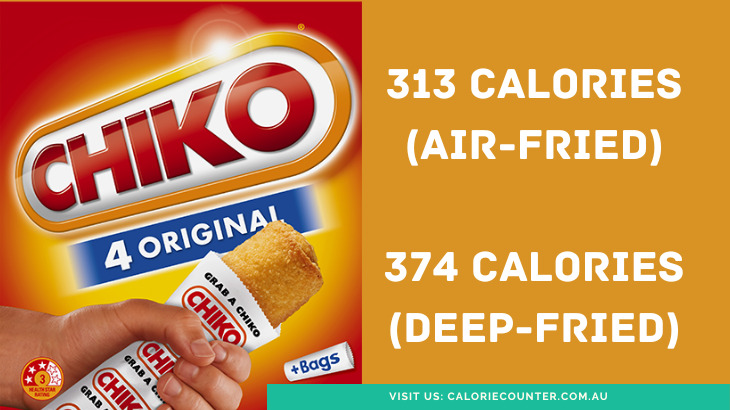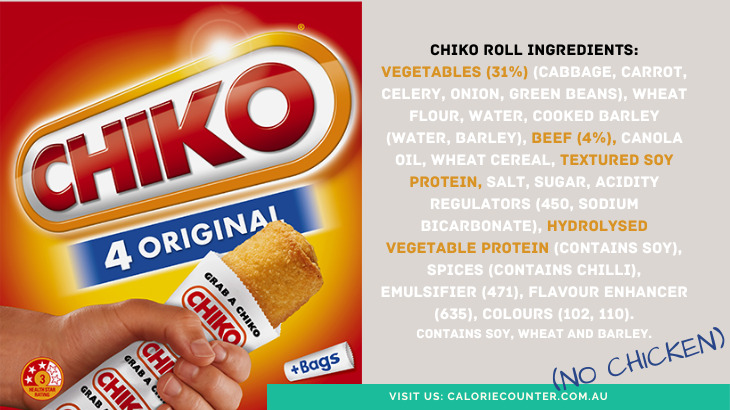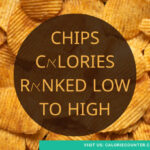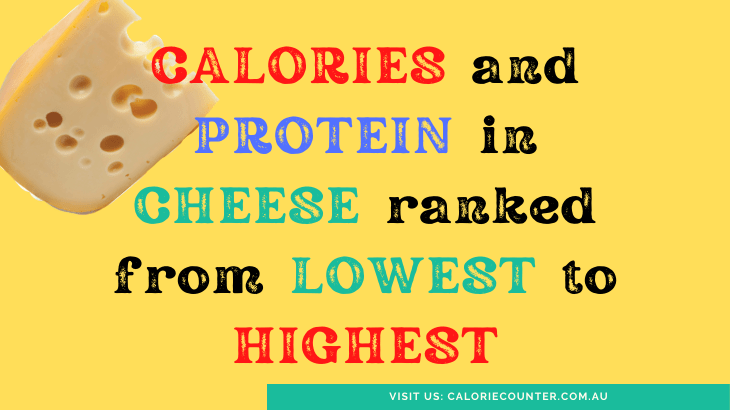Its hard to go past a good Chiko Roll but what’s in them, how many calories do they have and how did they get their name? Why is this Australian classic comfort food so well-known and iconic? Let’s get the answers to these questions before we start putting these handy tubes of savoury crunch into the snack rotation!

Chiko Roll Calories
One Chiko Roll has 313 calories, or 1,310 kilojoules. That’s about equivalent to a cheeseburger from Macca’s. The average Chiko Roll weighs 162 grams, so on a per 100-gram basis it has 193 calories (807kJ).
With similar calories to a cheeseburger, it seems like a reasonable footie snack. But there’s a catch! That calorie count is just for the roll if it is cooked in the air-fryer with no added oil. If your Chiko Roll is deep fried, it will have 374 calories, or 1,571kJ in it! That’s a big 61 calorie (19%) difference, thanks to the Chiko Roll’s famous oil-absorbing crunchy cover. So, what’s in that roll wrapper and what is it covering? Let’s see the ingredients:

Chiko Roll Ingredients
According to Simplot Australia (the manufacturer), these are the Chiko Roll ingredients:
Vegetables (31%) (cabbage, carrot, celery, onion, green beans), wheat flour, water, cooked barley (water, barley), beef (4%), canola oil, wheat cereal, textured soy protein, salt, sugar, acidity regulators (450, sodium bicarbonate), hydrolysed vegetable protein (contains soy), spices (contains chilli), emulsifier (471), flavour enhancer (635), colours (102, 110).
Contains soy, wheat and barley.
There’s No Chicken in Chiko Rolls!
Notice something? There’s no chicken in Chiko Rolls! No lamb either, even if some sources around the internet say that the chicken was swapped for lamb back in the 1960’s. Nope, the only meat in Chiko Rolls is about 6 grams (one teaspoonful) of beef. If you’re tasting and feeling what seems like a lot more than a teaspoonful of meat, the textured soy protein and hydrolysed vegetable protein has suckered you in!
What, Exactly, Is a Chiko Roll?
A Chiko Roll is a tube of pastry, closed on both ends, and filled with a savoury mix of shredded vegetables, starch, and minced beef. It is a staple fast-food on the menu of many a milk bar and fish-and-chippie. Loosely inspired by a type of Chinese spring roll, they are crunchy, messy, tasty, and altogether satisfying when freshly cooked. Many people choose to dip or smother them in tomato sauce before taking a bite from the conveniently one-hand-held roll.
These days, most people buy them frozen from supermarkets like Woolworths to cook at home.

Chiko Roll History
Without getting into the big Bendigo-Wagga-Melbourne dispute about where the Chiko Roll was first sold and popularised, it is safe to say that the Chiko Roll was invented by the McEnroe Brothers in Bendigo in 1950. The ingredients changed several times, but one constant has remained since inception: there is not now, nor has there ever been, any chicken in the Chiko Roll. They named it the Chiko Roll because literal Chicken Rolls were bestsellers at sports events and fairs back then, and they wanted to hitch a free ride on their popularity.
But it wasn’t until the 1970s and 80s that the Chiko Roll cemented itself in our culture, thanks to racy (scantily-clad women on motorbikes) poster advertising in neighbourhood tuck shops. Teens rushed into the corner stores to buy whatever it was that the pretty lady on the motorbike was selling. The legend was born!
Nutrition: Is the Chiko Roll Healthy?
The Chiko Roll is not the sort of food that you will find on any nutritionist’s list of healthy foods. It is high in processed carbs, high in saturated fat (2.3g/serve), and low in protein. It contains at least six food additives and when it is cooked in oil it sucks up a whole lot of extra calories. That said, there are worse fast-food snacks out there. The Chiko Roll does cover all the macronutrient bases and it is relatively low in sugars (3.7g/serve). Almost a third of the roll is made from vegetables (mainly cabbage), so you’ll be getting some half-decent micronutrients along with about 3 grams of dietary fibre.
So go ahead, enjoy your Chiko Roll (once in a while!). And don’t forget to record it in your calcount Calorie Tracker!









